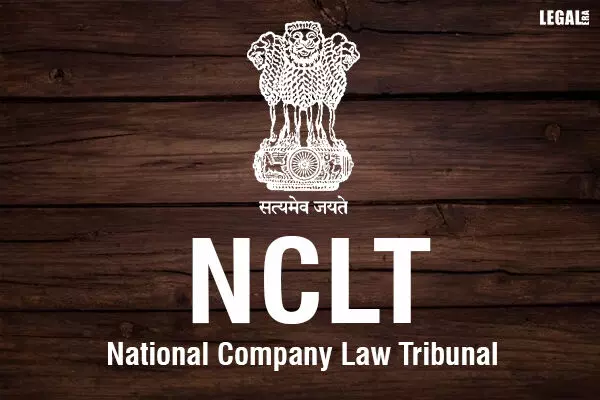- Home
- News
- Articles+
- Aerospace
- Agriculture
- Alternate Dispute Resolution
- Banking and Finance
- Bankruptcy
- Book Review
- Bribery & Corruption
- Commercial Litigation
- Competition Law
- Conference Reports
- Consumer Products
- Contract
- Corporate Governance
- Corporate Law
- Covid-19
- Cryptocurrency
- Cybersecurity
- Data Protection
- Defence
- Digital Economy
- E-commerce
- Employment Law
- Energy and Natural Resources
- Entertainment and Sports Law
- Environmental Law
- FDI
- Food and Beverage
- Health Care
- IBC Diaries
- Insurance Law
- Intellectual Property
- International Law
- Know the Law
- Labour Laws
- Litigation
- Litigation Funding
- Manufacturing
- Mergers & Acquisitions
- NFTs
- Privacy
- Private Equity
- Project Finance
- Real Estate
- Risk and Compliance
- Technology Media and Telecom
- Tributes
- Zoom In
- Take On Board
- In Focus
- Law & Policy and Regulation
- IP & Tech Era
- Viewpoint
- Arbitration & Mediation
- Tax
- Student Corner
- AI
- ESG
- Gaming
- Inclusion & Diversity
- Law Firms
- In-House
- Rankings
- E-Magazine
- Legal Era TV
- Events
- News
- Articles
- Aerospace
- Agriculture
- Alternate Dispute Resolution
- Banking and Finance
- Bankruptcy
- Book Review
- Bribery & Corruption
- Commercial Litigation
- Competition Law
- Conference Reports
- Consumer Products
- Contract
- Corporate Governance
- Corporate Law
- Covid-19
- Cryptocurrency
- Cybersecurity
- Data Protection
- Defence
- Digital Economy
- E-commerce
- Employment Law
- Energy and Natural Resources
- Entertainment and Sports Law
- Environmental Law
- FDI
- Food and Beverage
- Health Care
- IBC Diaries
- Insurance Law
- Intellectual Property
- International Law
- Know the Law
- Labour Laws
- Litigation
- Litigation Funding
- Manufacturing
- Mergers & Acquisitions
- NFTs
- Privacy
- Private Equity
- Project Finance
- Real Estate
- Risk and Compliance
- Technology Media and Telecom
- Tributes
- Zoom In
- Take On Board
- In Focus
- Law & Policy and Regulation
- IP & Tech Era
- Viewpoint
- Arbitration & Mediation
- Tax
- Student Corner
- AI
- ESG
- Gaming
- Inclusion & Diversity
- Law Firms
- In-House
- Rankings
- E-Magazine
- Legal Era TV
- Events
NCLT Expands Threshold Limit to Include Homebuyers Who Purchased Flats After Completion

NCLT Expands Threshold Limit to Include Homebuyers Who Purchased Flats After Completion
The Jaipur bench of the National Company Law Tribunal (NCLT), comprising Judicial Member Deep Chandra Joshi and Technical Member Atul Chaturvedi, has allowed an application filed by Gajraj Jain and others to implead additional financial creditors to initiate the corporate insolvency resolution process (CIRP) against Shiv Gyan Developers Pvt. Ltd. (Corporate Debtor) under Section 7 of the Insolvency and Bankruptcy Code, 2016 (Code), in compliance with the Supreme Court's order in the case of Gajraj Jain & Ors. Vs. Shivgyan Developers Pvt. Ltd. dated May 18, 2022.
The Supreme Court had in the aforementioned case, allowed Gajraj Jain and two other applicants (applicants) to implead 10 per cent of the homebuyers to the main application, in compliance with the requirements of the Code.
The Tribunal, relying on the Supreme Court decision of Manish Kumar vs. Union of India, held that persons who have already purchased flats after construction is complete are still considered allottees and must be included in calculating the threshold under the Code.
As to the background of the case, Gajraj Jain and two other applicants filed an application under Section 7 of the Insolvency and Bankruptcy Code, 2016 (Code) to initiate the corporate insolvency resolution process (CIRP).
The Supreme Court directed the applicants to meet the threshold requirement provided in the amended proviso to Section 7(1) of the Code.
This application was filed to comply with the Supreme Court's order to implead 25 applicants holding 17 flats, along with the original allottees (who hold two flats). This represents 16 per cent of the total 120 allotted units. At the time the application was filed, the minimum required amount of default was ₹1 lakh. Therefore, the applicants argued that impleading 25 allottees who are holding 17 flats meets the requirement under the second proviso to Section 7(1) of the Code.
The corporate debtor argued that the applicants hold 19 units, of which 14 units have been handed over to the allottees, with sale deeds executed in their favour. Therefore, the corporate debtor argued that these 14 units cannot be included in the present application because the applicants no longer have a cause of action.
The Tribunal allowed the application, relying on the Supreme Court decision in Manish Kumar vs. Union of India, which held that persons who have already purchased flats after construction is complete are still considered allottees and must be included in calculating the threshold under the Code.
The NCLT bench also considered the Supreme Court's observation in Manish Kumar vs. Union of India that only the number of allotted units in a project should be considered when calculating the total number of allottees, regardless of the number of units constructed. In cases of joint allotments, where a single unit is allotted to more than one person, the joint allottees of that unit are considered a single allottee.
The Tribunal noted that, in this case, the application was filed by allottees of 19 units, which is more than 10 per cent of the total 120 allotted units in the same real estate project, thereby meeting the requirement of the second proviso to Section 7(1) of the Code.




